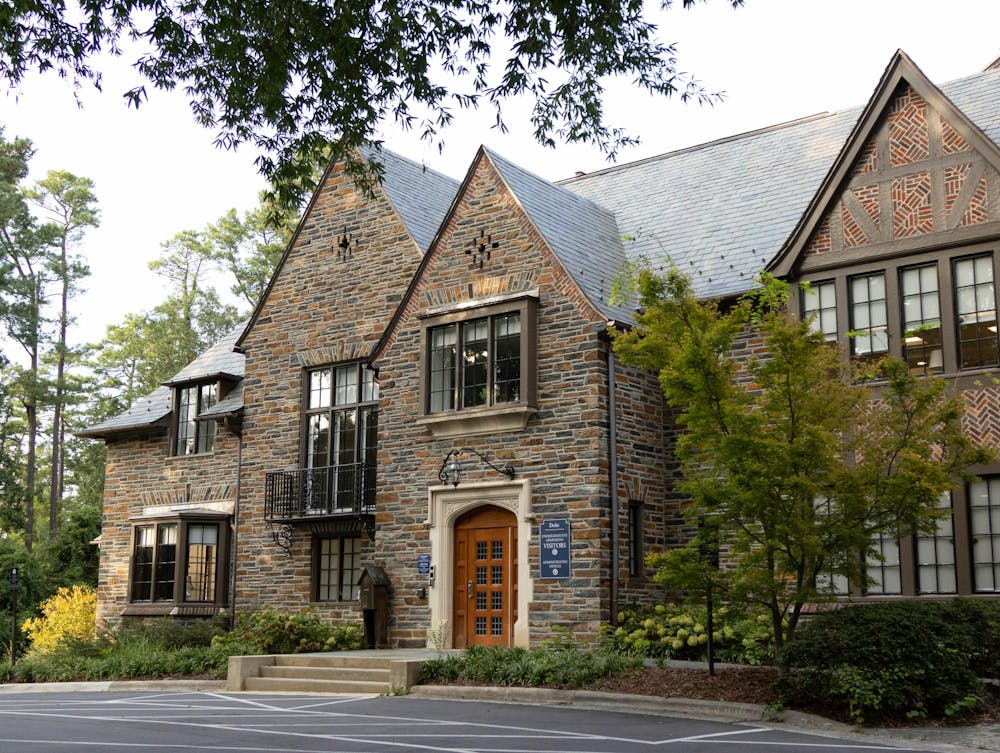Duke welcomed a first-year class characterized by an increase in socioeconomic diversity and a racial profile consistent with previous years, despite national declines in the racial diversity of collegiate admission classes following the June 2023 Supreme Court ruling overturning affirmative action and criticism toward the University for being “one of the least economically diverse colleges in the U.S.”
Of the 1,733 students in the Class of 2028, 22% are Pell Grant-eligible students — double the amount from the Class of 2026. In September 2023, the University was mentioned in a New York Times Magazine article — “Why does Duke have so few low-income students?” — that called out its low percentage of Pell Grant-eligible and middle-income students in comparison to 11 other academically elite colleges.
The Class of 2028 at Harvard College — one of the defendant universities in the affirmative action case — includes 20.4% Pell Grant-eligible students, compared to 22 % from the time the NYT Magazine article was published. The 1.6 % decline marks the university’s drop from its previously-held first spot among elite colleges.
The Massachusetts Institute of Technology’s Class of 2028 has 24% Pell Grant-eligible students, marking a 3% increase from the 21 percent reported in September 2023. Columbia University, the second-ranked university in the article, has not yet released its Class of 2028 profile indicating financial statistics.
The percentage of Duke’s financial aid recipients increased from 50% in the Class of 2026 to 56% in the Class of 2027. Data on financial aid recipients in the Class of 2028 has not been released.
As a result of the Supreme Court decision, universities are no longer permitted to use racial data throughout the admissions process. Instead, they can consider an applicant’s financial circumstances through a need-aware process — a practice Duke claims not to employ.
Duke was sued in 2022 alongside 17 other elite institutions for allegedly practicing need-aware admissions and engaging in price-fixing with other universities. The University settled for $24 million in January, and current students and alumni going back to 2003 are now eligible for compensation.
Duke’s Class of 2028 is composed of 13% Black students, consistent with its Class of 2027 and 2026 enrollment. The total enrollment in the Class of 2027 was 1,743 students and 1,738 in the Class of 2026. The Class of 2028’s Hispanic/Latinx enrollment is 14 percent, compared to 13 percent and 17 percent in the Class of 2027 and 2026, respectively.
The Supreme Court decision’s impact was made almost instantly apparent at Duke — in April, the University announced the end of the Reginaldo Howard Memorial Scholarship Program for “top applicants of African descent.” The scholarship has since been replaced with the Reginaldo Howard Leadership Program, which is open to all undergraduate students and does “not include a competitive selection process.”
Other universities across the country, including the University of Missouri and the University of Alabama, have made similar cuts to their race-based scholarships.
At the time of the ruling, experts predicted that the decision would increase the number of white and Asian students across elite institutions, which was exhibited at MIT with a 7 percentage point increase from 40% to 47% for the Class of 2028.
This prediction did not hold true at Duke.
The University’s white student enrollment decreased by 10 points from the Class of 2026 — 63% — to the Class of 2027, falling by an additional point for the Class of 2028. Asian student enrollment decreased from last year by 6 points, bringing the Class of 2028’s enrollment to 29%.
While the full impact of the affirmative action ruling on college admissions has yet to be seen, insights into its immediate repercussions can be observed. Most notably, an Aug. 30 NYT article revealed that Black student enrollment declined at MIT by 10% and at Amherst College by 8%.
The University of North Carolina at Chapel Hill — the other defendant university in the Supreme Court case — saw a decline in its Black student population from 10.5% in the Class of 2027 to 7.8% in the Class of 2028. The demographic development was reported the same day it was revealed that the university had eliminated its Diversity and Inclusion Office Thursday.
“Our focus on expanding access to a Duke education reflects the University’s unwavering commitment to diversity in all forms,” said Provost Alec Gallimore in a Tuesday Duke Today announcement. “I applaud the dedication and commitment of everyone involved in this effort, which began long before the Supreme Court’s decision on race-conscious admissions and will continue into the future.”
Get The Chronicle straight to your inbox
Sign up for our weekly newsletter. Cancel at any time.

Abby Spiller is a Trinity junior and editor-in-chief of The Chronicle's 120th volume.

